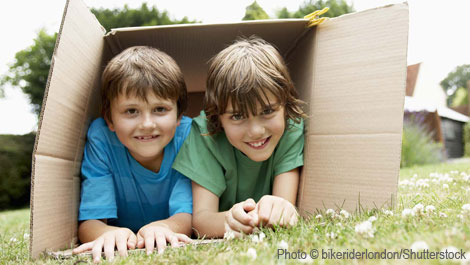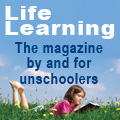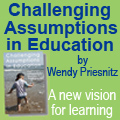|

Where Kids Play
The Benefits of Playing in the Real World
by Wendy Priesnitz
When kids live in tightly inhabited urban environments, they don’t always have access to safe places to play and can benefit from specially designed spaces, which are far superior to paved streets full of traffic. Neighborhood or destination playgrounds can be fun places, especially when they are designed with the help of kids and when they include lots of open-ended materials for further customization.
There are many wonderful playgrounds popping up across the globe these days, as the art and science of children’s play develops. But they are constructed environments, largely based on adult research into what kids want and need. Has anyone asked the kids? (Turns out they have, and I’ll be writing about that in the future.)
As far back as the 1970s, some play researchers have held the controversial opinion that kids don’t want or need playgrounds, that their very existence is an adult construct, designed to keep them safely off the streets and out of the way of adults. This way of thinking says that play- grounds are the result of a duel between playing kids and hurrying (and driving) adults – and that adults win because their pursuits are thought to be more important.
An article dismissing the need for playgrounds was published in the McGill Journal of Education in 1977. It quoted environmental psychologist Roger Hart, who exhaustively studied kids at play in Wilmington, Vermont, a town without playgrounds of any sort.
Hart observed: “A finished play place is not required… Children create their own play places, the process (of that creation) being all important.” Hart has gone on to direct the Children’s Environments Research group at the City University of New York Graduate Center and is knowledgeable about adventure playgrounds. He says, “Kids don’t need equipment, they need opportunity.”
Iona and Peter Opie, in their book Children’s Games in Street and Playground, put the rationale for not needing playgrounds even more simply: “Where children are is where they play.”
We call this real world activity “spontaneous play.” It occurs when children do an activity freely. But it isn’t necessarily unorganized – as long as the kids do the organizing. If they organize a ball game or a game of hide-and-seek, they are meeting a need for spontaneous play. It happens wherever children are at the moment. It does not necessarily preclude the use of playground equipment, as long the equipment allows for the use of the imagination.
In other words, because kids are born to play, play happens wherever kids are. They recognize no division between play time and the rest of life, nor between play spaces and the rest of their environment. Every waking moment is dedicated to interacting with their environment, as they explore and learn through play.
Babies and toddlers love to turn eating into a play experience – smelling, tasting, squashing, and throwing their food. When kids of all ages are paddling in a puddle, digging in the back garden, splashing in the kitchen sink or a stream, they are playing. And when, at the end of the day, they need to be cleaned up, the bathtub becomes their playground.
In an article in Natural Child Magazine, environmental educator Patty Born Selly put it this way: “Your typical jungle gym apparatus at a park offers basically one way to go up or down. You use the ladder, or the fake rock-climbing bumps, and the slide. There is a right way (i.e. one that gets you to the top), and all the other ways that don’t get you to the top of the structure where the other ‘experiences’ await. The rungs on the ladder...are all the exact same size and dimension. And there is only one...outcome: Reach the top.”
A tree, on the other hand, offers a variety of ways to get from one height to another, although reaching the top is usually not the goal. There are exciting and interesting things to be found in all sorts of places within the many differently sized and shaped branches of a tree. Climbing a tree requires the development of balance, concentration, and coordination well beyond that required to climb a jungle gym. It is also, of course, a bit riskier.
Risk avoidance (and the attendant legal liability) has had a huge effect on children’s play in our fear-based society. But the free-range childhood and adventure playground movements and other similar attempts to include a bit of risk, self-direction, and imagination into children’s play experiences are pushing back against the trend to make playgrounds so safe that they are boring.
Some of these new spaces are, without doubt, fun and stimulating for kids. In fact, some of them mimic real life. The best adventure playgrounds resemble nothing more than the backlot where my mother wouldn’t allow me to play when I was a kid: seemingly random jumbles of paint, pieces of wood, buckets, old tires, and more. (Early examples in Europe were known as “junk playgrounds” or “bomb- site adventure playgrounds.”) They are free-range, semi-wild spaces for kids to explore, make, and play. And I think that the adult designers of these spaces get what I’m talking about.
On his blog www.aplayfulpath.com, Bernie De Koven quotes Penny Wilson, an articulate voice for the adventure playground movement: “Play is a process that is freely chosen, personally directed, and intrinsically motivated. That is, children and young people determine and control the content and intent of their play by following their own instincts, ideas, and interests, in their own way, for their own reasons.”
But I can’t help but wonder – as have others before me – if we have lost sight of the forest for rearranging the trees and, indeed, are cultivating rarified spaces for them to grow when they could otherwise flourish everywhere. Here’s the thing: Play is, among other things, children’s opportunity for learning skills demanded by adult life. I believe that those skills are best learned by being around adults, in spaces where adults go about their daily lives, from watching them and being mentored by them. Kids thrive where the action is and don’t need to be shut away in their own spaces.
So I would like to see less money and effort put into creating segregated play spaces and more into making the real world safer, more welcoming, and more nurturing for our always-playing, always-learning children.
Playgrounds can be fun places, where you can meet kids from the neighborhood, and where you can get away from your parents for a while and have some independence (especially if you are allowed to be there and to walk home by yourself!). But I think we need to be sure we know why we are building them...and it should not be merely to segregate our children into their own special spaces. The real world could offer our children much richer experiences than the best playgrounds.
Wendy Priesnitz is the editor of Child’s Play Magazine. She is also the author of thirteen books, some of which are about self-directed learning, for which she has been an advocate for over forty years.
Copyright © Life Media
Privacy Policy
 



|

